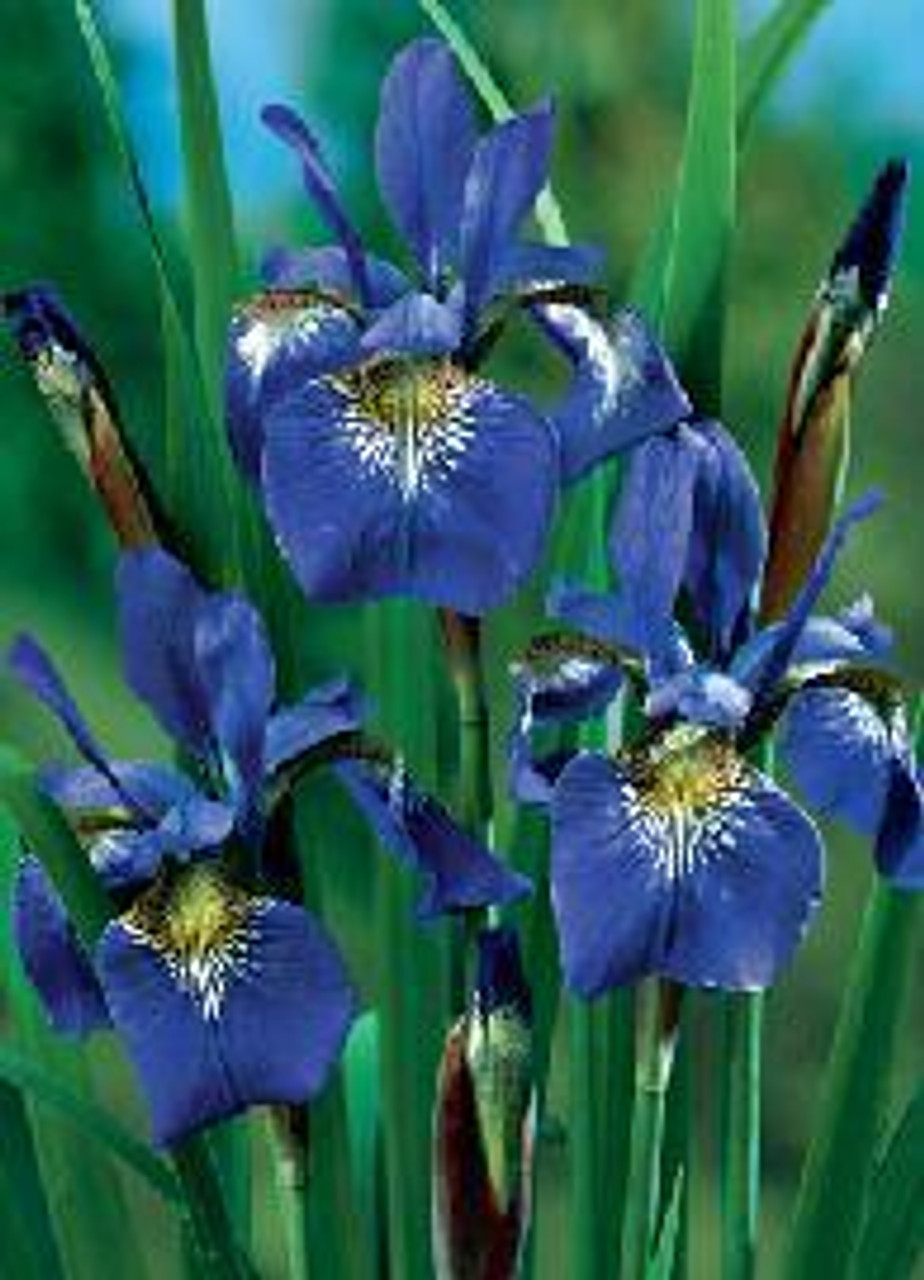Product Description
Iris siberica 'Caesar's Brother' (4) 1-gallons
Common Name: Siberian iris
Zone 3 to 8, perhaps 9.
Full sun to partial shade.
Iris sibirica 'Caesar's Brother' is a beautiful and reliable Siberian Iris known for its vibrant, deep violet blooms and graceful, grass-like foliage. It is a popular choice among gardeners for its low-maintenance nature and ability to add a touch of elegance to any garden.
- Striking blooms: The deep violet flowers are truly captivating, featuring a velvety texture and a subtle golden signal on the falls (the lower petals). They appear in late spring to early summer, creating a stunning display.
- Elegant foliage: The tall, slender, and upright leaves provide a beautiful backdrop to the flowers. They remain attractive throughout the growing season, adding texture and vertical interest to the garden even after the blooms fade.
- Hardy and adaptable: 'Caesar's Brother' is a tough plant that can tolerate a wide range of growing conditions. It thrives in full sun to partial shade and prefers moist, well-drained soil, but it can also handle some drought and clay soil.
- Low maintenance: Once established, this Siberian Iris requires minimal care. It is relatively pest and disease-free and does not need to be divided as frequently as some other iris varieties.
- Versatile use: 'Caesar's Brother' can be used in various garden settings, including borders, beds, water gardens, and even containers. It is a great choice for adding color and vertical interest to any landscape.
Growing Tips:
- Planting: Plant 'Caesar's Brother' in spring or late summer, spacing the rhizomes (the underground stems) about 18-24 inches apart. Ensure the top of the rhizome is level with the soil surface.
- Watering: Water regularly, especially during the first year to help the roots establish. Once established, it can tolerate some drought, but it performs best with consistent moisture.
- Fertilizing: Apply a balanced fertilizer in early spring before new growth begins.
- Pruning: Remove any dead or damaged foliage in late winter or early spring.
- Dividing: If the clump becomes overcrowded, you can divide the rhizomes in late summer or early fall.
Overall, Iris sibirica 'Caesar's Brother' is an excellent choice for gardeners looking for a beautiful, reliable, and low-maintenance plant. Its stunning blooms and elegant foliage will add a touch of sophistication to any garden.
- Deep purple flowers in late spring rise to height of 36 to 40 inches on rigid stems. Hardy clumps of arching, slender, grass-like, slightly bluish-green leaves spread quickly.
- One of the most easily grown Iris, this adaptable Siberian Iris will tolerate a wide range of soils. It will adapt to poor, dry soil or boggy conditions; but best planted in medium to moist, well-drained, fertile, slightly acid soil.
- Plant on hillsides for erosion control, along a stream, water garden or pond, and a great patio container plant. Use in massed plantings to provide weed control. Water regularly during the first growing season to establish a deep, extensive root system to help make them drought resistant, once established.
- Excellent cut flower but lasts only 1 to 2 days. Less susceptible to iris borer and soft rot than tall bearded iris. Low maintenance and deer resistant.
Siberian irises are haled for their elegant, delicate flowers and disease resistance. They perform admirably in the sunny to partially shady garden but need plenty of water throughout the season to continue looking their best. In naturalized settings, they are particularly effective around water features. They can also be grown under Black Walnut trees since they are not affected by juglone. Siberian Irises bloom before Japanese Irises but after Tall Bearded Irises.
(4) 1-gallon containers ready to plant, plants may be trimmed for shipping,
Other Details
The most important part of the plant is its root system. Healthy roots are the foundation of a healthy, vibrant plant. The type of plug container used is based on the specific needs of the plants. Perennials offered as bare root traditionally perform better when planted as bare root.Planted in a specialized mix, potted plants have well established root systems. Top growth stage will vary depending on the current life cycle and time of year when shipped. In Winter and early Spring dormant plants may be shipped. Dormant plants may be planted right away, even before the last frost date.
Most bare root varieties are field grown for at least one season, though Hemerocallis and Hosta are grown for two seasons. The bulk of the soil is removed during the harvesting process and the tops of most varieties are trimmed back to the crown. They are graded, packed in shredded aspen or sphagnum moss and stored in freezers until ready to be shipped.
See our Container Sizes and Bare Root Perennials pages for more information.
Plant information and care is provided in the Overview section, Plant Genus Page and general information is provided in the Planting Care & Guides. Additional questions can be asked on each Plant page.
Plant Spacing: Using the maximum mature spread or width of a plant to guide spacing, ensures space to grow to full size. To fill an area sooner, plant them closer together. Just remember, future thinning or transplanting may be needed.
Water: Keep a close eye on newly planted perennials, especially throughout the first growing year. Most early plant loss is due to too much or too little water!












